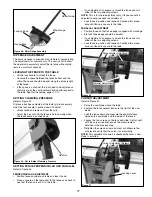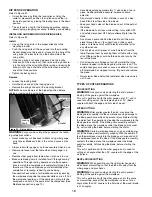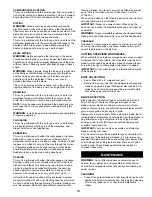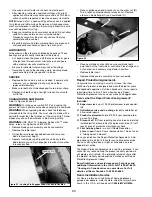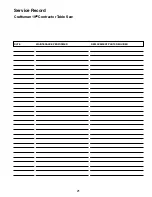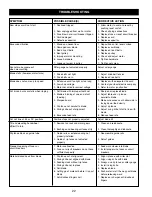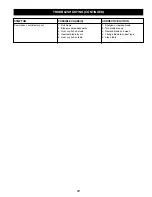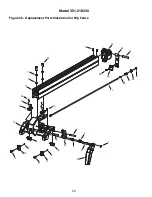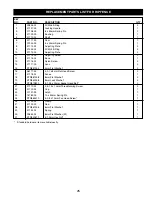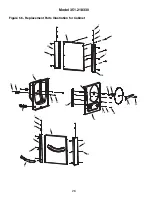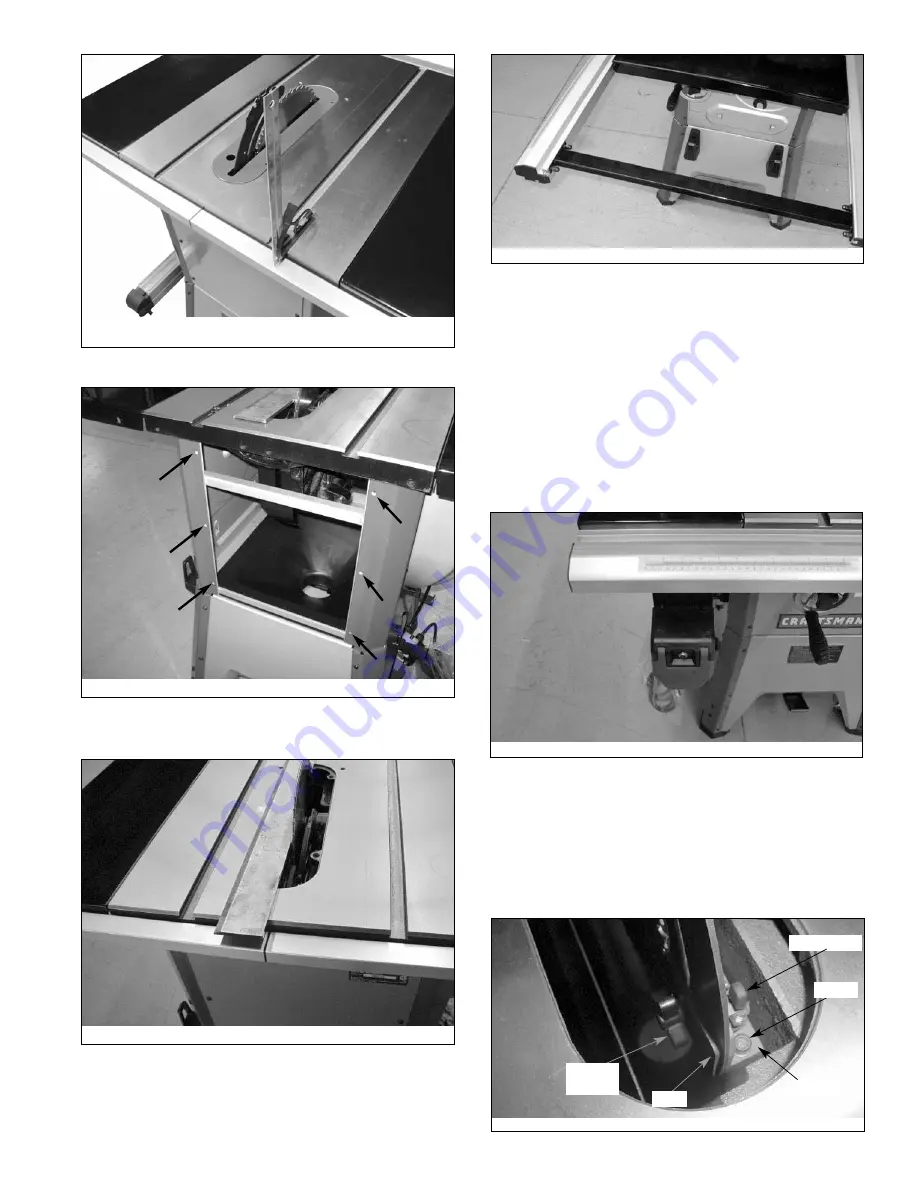
• Loosen and remove six socket pan head screws and the
back panel. This will allow easier attachment of the rear rails.
• Install the rear rails in the same manner as the front rails
and align the rail joint to the blade.
• Replace back panel of the cabinet.
• Insert M8 x 20 hex bolts through holes in bracket at each
end of brace. Attach brace to the far right end of the rails
by sliding hex bolts into the rail T-slots. Secure bolts in
position with flat washers, lock washers and nuts.
ATTACH SWITCH ASSEMBLY
Refer to Figure 30.
Tools Required: 10mm Open end Wrench
Hardware Required: Two M6 x 16 hex head bolts, two M6 flat
washers, two M6 lock washers and two M6 hex nuts.
(Hardware bag #3).
• From above switch assembly bracket, insert two bolts
through bracket holes.
• Loosely attach flat washer, lock washer and nut to bolts.
• Insert bolt heads into T-slot on bottom of left front rail.
• Slide switch assembly 6
″
to 8
″
from left end of rail as
shown in Figure 30.
• Fully tighten flat washers, lock washers and hex nuts to
secure switch assembly in place.
POSITION AND ADJUST RIVING KNIFE
Refer to Figure 31.
• Riving knife is installed on the saw. Raise the blade com-
pletely to access the riving knife.
• Loosen the locking knob and raise the riving knife to its
highest position. Riving knife has three holes for three posi-
tions. The highest position is for all thru cuts. The middle
position is for rabbets and other non-thru cuts, (with guard
and pawls removed). The lowest position is for dado cuts.
11
Figure 26 - Check parallelism of rails to table with combination
square. Check at several locations along rail.
Figure 27
Figure 28
Figure 29
Figure 30
Figure 31 - Riving Knife
Locking Pin
Bracket
Plate
Locking
Knob
Screw

















